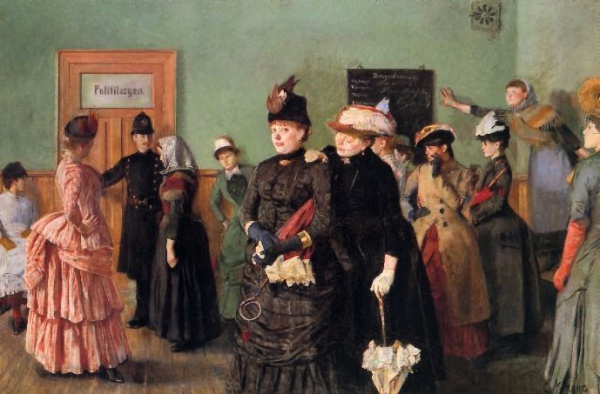Facts About Albertine i politilægens venteværelse
"Albertine i politilægens venteværelse" is a renowned painting by Norwegian artist Christian Krohg. This naturalist work is set in a medical waiting room and is celebrated for its candid commentary on social issues, particularly the taboo topic of sexual morality. At the time it was painted, it caused considerable controversy among Krohg's contemporaries. The painting, which features life-sized figures, is now exhibited at the National Museum of Art, Architecture and Design in Oslo.
In the scene, "Albertine" is depicted waiting to enter an examination room. She is dressed modestly, in stark contrast to the more elaborately attired women around her. This contrast underscores the societal norms and pressures of the period. Interestingly, the painting spent almost two decades stored away in a hut before it was sold and eventually acquired by the National Gallery of Norway in 1907.
Krohg did not limit himself to this single painting. He created several works featuring the character "Albertine" a seamstress forced into prostitution by societal pressures. Some of these related paintings include "Daggry" from 1880, "Sypiken" from 1881, and "Trett" from 1885, all of which explore similar themes. Krohg also wrote a novel titled "Albertine" in 1886, which sparked public debate and contributed to the abolition of public prostitution in Norway.

 Sweden
Sweden